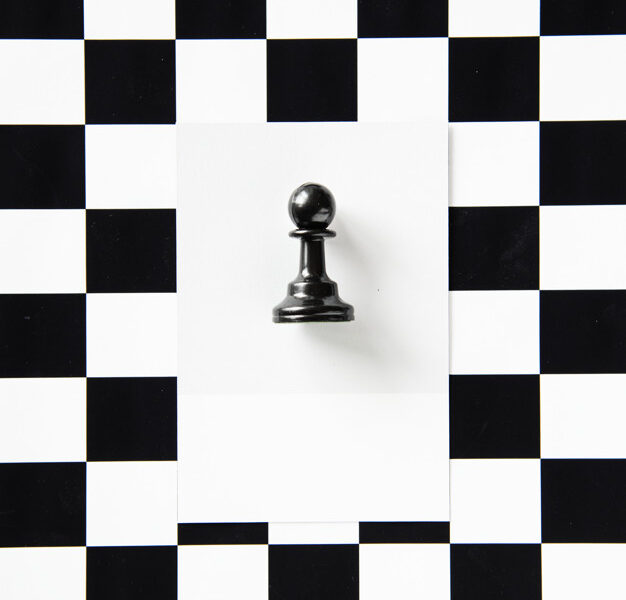Checkers is an easy to learn game that can bring hours of fun. Called Draughts in most countries, the game of Checkers dates back to at least the fourteenth century and possibly even further back into antiquity.
The rules for the game are straight forward. Here is how to play Checkers according to the US Standard Rules.
Setting Up The Game Board
The checkerboard is made up of 64 squares, alternating in a light and dark pattern. 32 squares are light, and 32 squares are dark.
Checkers is played by two players, each starting with 12 tiles. One player has the light tiles and one the dark tiles. The board is set up so that each player has a light square in the right corner on his side of the board.
Each player lays out his tiles on the 12 dark squares of the three rows closest to him. Two rows will be empty in the middle of the board.
Playing The Game
The player with the dark tiles moves first. Players will usually use some form of chance, like flipping a coin, to decide which player uses the dark tiles.
After the first move, players take turns moving their tiles. Tiles may only be moved onto the dark squares, so all moves must be made diagonally.
Single tiles may only be moved forward and only one tile at a time.
An opponent’s tile may be captured, that is removed from the board, by jumping over it with a tile.
The tile must be moved in a straight diagonal line directly to the square on the other side of the opponent’s tile.
Only one of the opponent’s tiles may be captured in each jump, however multiple jumps may take place in a single turn if the initial tile moved is in position to make another jump.
If a jump is possible, it must be played. The player has no choice. If there are multiple jumps possible, the player may choose which jump to make.
When a tile reaches the furthest row from it’s starting position, the tile is crowned and becomes a king.
One of the tiles previously removed from the board is placed on top of that tile so that it is of double height.
While kings are also limited to moving diagonally, moving only on the dark tiles, they may move either forward or backwards. This flexibility can be a major advantage in the game.
Ending the Game
A Checkers match ends when one of the opponents cannot make a move. This is usually caused by one player having his last tile captured.
It can also happen, though, when one player has all tiles completely circled by his opponent, leaving him no place to move.
While these game rules are from the US Standard Rules, other variations of the game exist.
Checkers can be played as a friendly game between friends or in tournaments around the country.
Those interested in playing Checkers at the tournament level should contact The American Checker Federation for more information.
Checkers Strategies
One of the best checkers strategies is a move in Checkers called the “two for one” or even the “three for one”.
This is where you sacrifice one of your pieces to setup a situation where you will take two or more of your opponent’s.
This works because most people don’t look far enough ahead to see the consequences of their actions OR because in many rule variants of Checkers you have to take a jump if it is presented to you.
Setting up two or three for one sacrifice is a great way to rack up your opponent’s pieces.
Remember that pieces closer to the middle of the board are allowed more options for movement than pieces stuck out at the edges.
Get your pieces toward the center to increase your play options. Increased play options mean more moves likely to earn your more pieces than you lose. Hand in hand with this bit of strategy is the reminder to be, well, mindful.
Look at every possible move on the board before jumping the gun. Don’t just look at your next move, look at the one after that, etc. This is the “measure twice, cut once” of the Checkers world.
When you find yourself stacking up two or three Kings (and heading towards even more), you should start to move them towards the center of the board as well.
Having just said all that about centering, remember that jamming up the board’s middle is the easiest way to lose the game. You’ll “lock up” the board, and end up limiting your movement options even further.
The Best Checkers Strategy
Sometimes people forget the easy strategy in favor of some pretty heavy thinking. But often the best checkers strategy is the most basic.
For instance, don’t lose sight of that most basic of Checkers tricks — slipping one of your pieces into an existing gap between you and your opponent.
This gets you closer to the enemy without jeopardizing your piece. Another Checkers “basic” — if you need to conserve pieces, stacking them up along the sides ensures that piece can’t be jumped. This is a matter of giving up mobility in favor of protecting your soldiers.
Strategy for Checkers
The last strategy for checkers I can offer is to study your losses more than your wins. A win in Checkers usually means you played within the parameters of a successful strategy you’ve already worked out.
When you lose, this means the strategy you’ve developed has some soft spots or you’re simply not pulling it off. Learn from your mistakes, keep a record of moves, even take photos of the board at different stages (if your opponent will allow you).
Study your losses and implement your strategy effectively and you’ll be the Checkers champion of the neighborhood in no time




